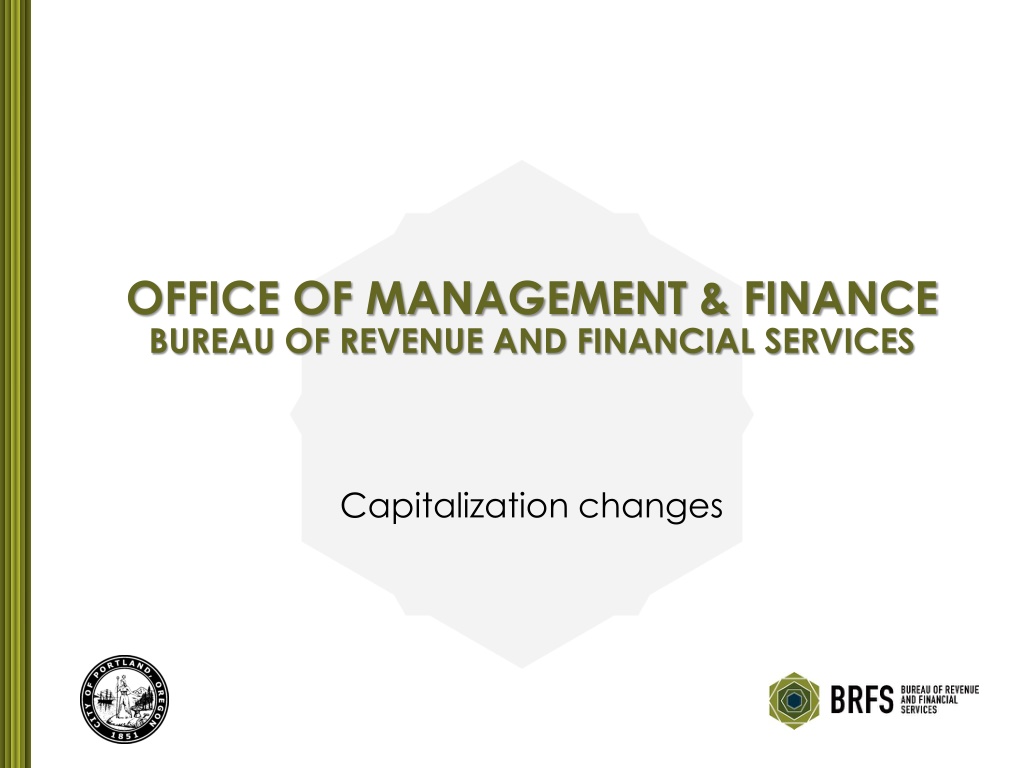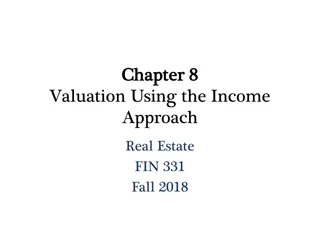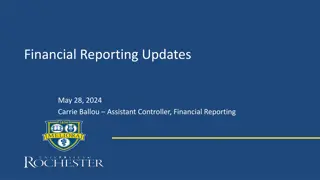Understanding Capitalization Changes in Government Financial Management
The evolution of capitalization policies in governmental financial management, as guided by GASB, is explored through examples and implementation considerations. Key points include applying capitalization thresholds to groups of assets, considering aggregate significance, and planning for effective inventory management. The content highlights the shift towards capitalizing assets based on aggregate importance rather than individual costs.
- Capitalization Changes
- Government Financial Management
- GASB Guidelines
- Asset Inventory
- Financial Policy
Download Presentation

Please find below an Image/Link to download the presentation.
The content on the website is provided AS IS for your information and personal use only. It may not be sold, licensed, or shared on other websites without obtaining consent from the author. Download presentation by click this link. If you encounter any issues during the download, it is possible that the publisher has removed the file from their server.
E N D
Presentation Transcript
OFFICE OF MANAGEMENT & FINANCE BUREAU OF REVENUE AND FINANCIAL SERVICES Capitalization changes
2 Capitalization change In GASB s 2015-1 implementation guide they asked the question: Q - Should a government s capitalization policy be applied only to individual assets or can it be applied to a group of assets acquired together? Consider a government that has established a capitalization threshold of $5,000 for equipment. If the government purchases 100 computers costing $1,500 each, should the computers be capitalized?
3 Capitalization change In 2015 their answer was: It may be appropriate for a government to establish a capitalization policy that would require capitalization of certain types of assets whose individual acquisition costs are less than the threshold for an individual asset.
4 Capitalization change The 2021 answer to the question is: A government should capitalize assets whose individual acquisition costs are less than the threshold for an individual asset if those assets in the aggregate are significant.
5 Capitalization change Examples given by GASB: o Computers o Furniture o Library books
6 Capitalization change Other possibililities o Radios o Monitors o Garbage bins in parks o Trees o Office chairs o ?
7 Capitalization change What we inventory and add to capital assets needs to be significant in total. Effective for fiscal year 2024, so we will need to do the inventory in the time period of fall 2022 to spring 2023, so that everything is loaded into SAP on 7/1/2024.
8 Capitalization change Implementation thoughts o Aggregate all purchases during a year as a system rather than tagging each item and entering separately. o How to remove from system? o What dollar amount would be significant.























